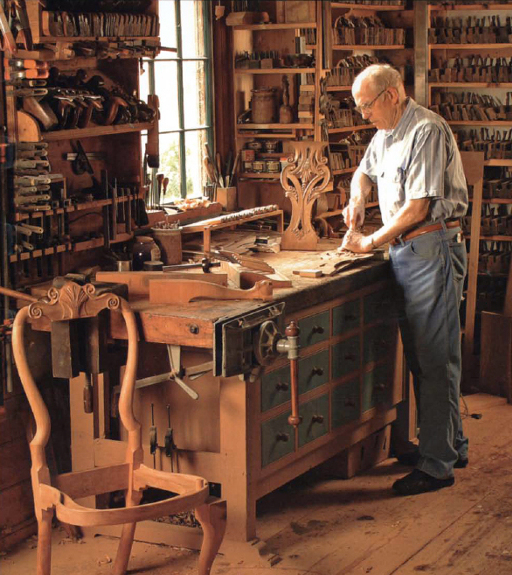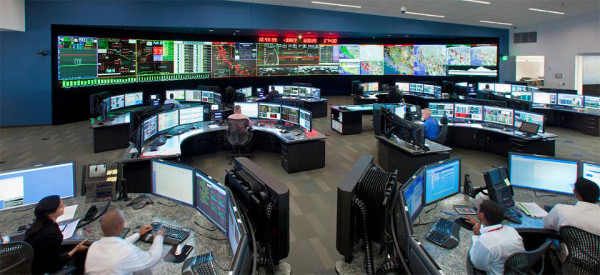These notes are based on Bret Victor’s talk on “Seeing Spaces” done at EG 2014 in May 2014.
- How can someone creating complex things see the behavior?
- What are powerful ways of seeing so that you can understand what the thing is doing?
Software based tools typically mean tools locked into a tiny rectangle that sits on your desk (a monitor). This is frustrating!
If you think about a lot of the traditional forms of craftmanship, they take place in a spacial environment, a room, that is designed for that purpose; where a worker is surrounded with tools, where they can walk around and use their body, use their hands and think spatially.

The room itself becomes the macro tool they are embedded inside. It becomes an extension of their body.
The idea of designing tools in the form of rooms, spatial environments is interesting. There are two powerful ideas that come from Maker Spaces:
- Creating in a shared environment
- Access to powerful tools
Different types of tools
- Bulding tools
- Conceptual Tools
- Seeing Tools
Historically people were surrounded by construction tools which are for taking materials and sticking things together. In what we make, the primary challenge is no longer putting the pieces together; the primary challenge is understanding what the thing is doing, why it is doing it and what you actually want it to do.
To do this you need to get into the head of the things. What you need are seeing tools. The few seeing tools we use nowdays are very primative with tiny rectangles that sit on our desks.

Some companies take seeing very seriously, for instance:
- NASA’s control center
- Control room at Fermilad particle accelerator
- California power grid control center
If you are wanting to launch a space shuttle, you typically have a room like NASA’s. Everything going on in a complex system is being displayed in a room at once.
These people know that if you are trying to design a system of such complexity that you have to understand in realtime, you have to build a room where you can go in there and understand everything that is going on.
That’s the kind of thinking I would like to bring to engineering.
Create an environment that is entirely around seeing and understanding on what the project is doing.
Three different levels
- Seeing inside
- Seeing across time
- Seeing across possibilities (e.g. AB Testing)
Some of what we are talking about is probably going to be expensive or an engineering challenge to build. But 3D printers and space shuttles are also expensive and engineering challenges and we have decided as a culture that those things are important things we want to have. So really the main thing that is needed here is the recognition of how important seeing is and the will to do something about it.
We need recognition of how important seeing is and the will to do something about it.
What different types of tools are good for:
- Bulding tools (Tinkering)
- Conceptual Tools (Tinkering & Engineering)
- Seeing Tools (Tinkering, Engineering & Science)
Move away from
People need to work in a space that moves them away from the kinds of non scientific thinking that you do when you can’t see what you doing .
Move towards
People need to work in a space that moves them towards deeply understanding what they are doing.

